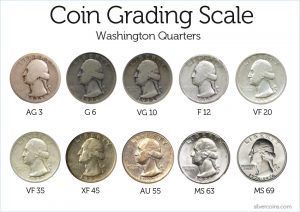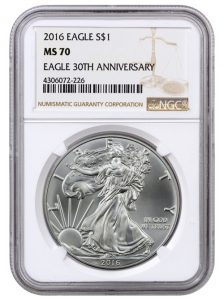 There’s a revolution brewing in the numismatics markets that is being fed by its own successes causing its own failures.
There’s a revolution brewing in the numismatics markets that is being fed by its own successes causing its own failures.
The first salvo was fired by the Professional Numismatic Guild and Industry Council for Tangible Assets in 2006 when they jointly performed their own survey. One of the results was that PNG and ICTA were sued by a few of the services whose services were deemed unacceptable.
Following the report, the services not named Numismatic Guarantee Corporation and Professional Coin Grading Service went into turmoil. PCI went out of business around the time the J.T. Stanton left the company. James Taylor bought ANACS from Anderson Press and move the company to Englewood, Colorado. Taylor raided graders from Independent Coin Grading Company. As a result, ICG moved to Tampa, Florida.
In the meantime, most of those companies rated “Unacceptable” in the PNG-ICTA report either went out of business or have been marginalized to the point of irrelevance.
Next was the creation of the Certified Acceptance Corporation as a grader of the graders. As I have explained in the past, although a fourth-party or validation service might be helpful, the CAC is not an independent organization providing the service. The company trades on its inside information in what it calls “market-making.” This type of arbitrage activity would be illegal in the securities industry but has given a false sense of security in the numismatics world.
Now there are rumblings again and this time there are a few significant people doing the talking.
For the last six month, noted numismatist and author Q. David Bowers has written several stories for Coin World that has been both critical of the coin grading business and the complexity of the grading system. Although Bowers recognizes that there are advantages to third-party grading there has been changes and not for the better.
In other words, third-party grading and authentication is good for the hobby but the services have problems.
- 2016 American Silver Eagle graded MS-69 by NGC
- 2016 American Silver Eagle graded MS-70 by NGC
Following NGC’s change in its registry rules to no longer allow coins graded by PCGS in their sponsored registry sets, NGC Chairman Mark Salzberg publishes an analysis on what he claims is the decline in PCGS-graded coins. In his analysis, Salzberg looks at the prices realized from auction sales of certain PCGS coins over time and compares them to PCGS population reports for those coins.
Through a set of charts that resemble the supply-and-demand curves, it is unsure if the charts prove anything. If Salzberg is trying to say that PCGS is practicing grade inflation, known as gradeflation, then he could prove that with the changes in the grading for many modern coins. However, comparing the population report (supply) of a classic coin like the 1912-S Liberty Nickel, may not be valid without looking at other factors, such as the population report of lower grades declining. Also, Salzberg only uses the prices realize from auctions held by Heritage Auctions and not a survey of the industry as a whole.
Does PCGS practice gradeflation? Can we also ask does NGC practice gradeflation? And we do not know how these services fare with CAC who keeps its raw data hidden from the public while using it to increase the value of the coins it examines.
Dave Bowers provides good insight into the problems with coin grading without trying to overburden the reader with statistics even with the suggestion that dealers may overly emphasize grade differences and not the aesthetics of the coin.
Bowers is not the only one complaining about grading, last September, Rick Snow wrote an article on the CDN Publishing Blog suggesting grading be adjusted to a 15-point technical scale without the qualifying notations such as “”Full Head” or “Full Bands.”
The numismatics industry has put too much trust in these grading services without oversight. When oversight was tried by industry representative organizations, the companies that did not like the results litigated rather than fix their problems causing the attempt at oversight to be eliminated. Then a validation service appears to only turn out to be something they are using to manipulate the markets in their favor.
In numismatics as in politics, I agree with Thomas Jefferson when he said, “I hold it that a little rebellion now and then is a good thing, and as necessary in the political world as storms in the physical.” Maybe it is time to stand up and ask PCGS why their population reports are going up in higher grades? We should ask why NGC is concentrating more on gimmick holders than the coin in those holders? And are NGC’s population reports without reproach? I am sure we can find problems with their population reporting. What happened to ANACS? Did Taylor get too cozy with the television shopping networks to justify general feeling that their coins are better priced as raw? And what the heck happened to ICG?Rather than implicitly trusting these companies, collectors and investors may want to start questioning all of these companies about their practices. Otherwise, you may find that coin you paid MS-70 prices for is really not worth more than an MS-68, which was a better looking, to begin with!
PNG-ICTA 2006 Grading Service Survey
Read their 2006 press release below or on Scribd.




